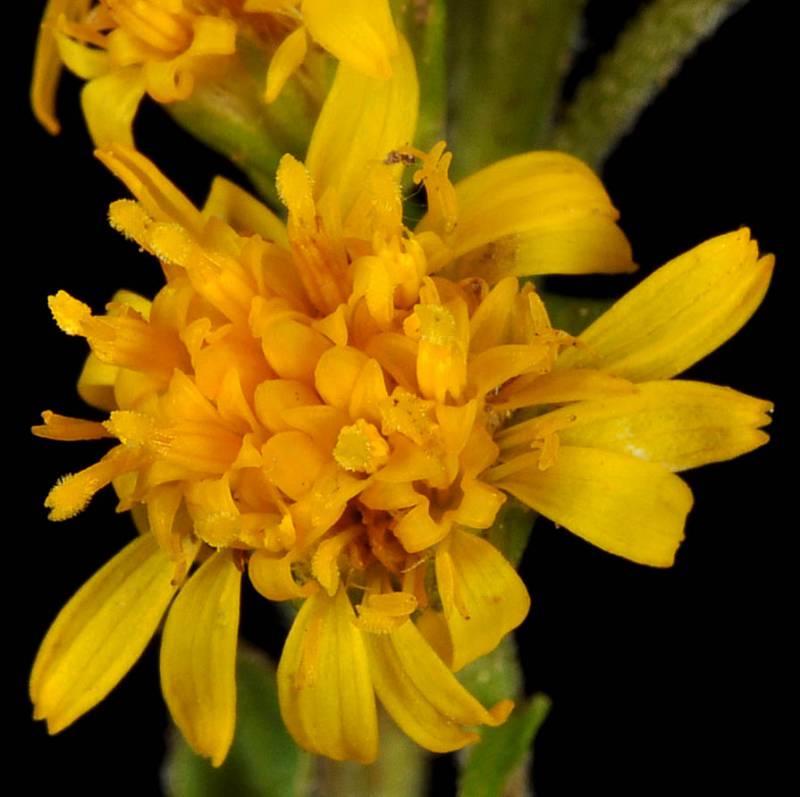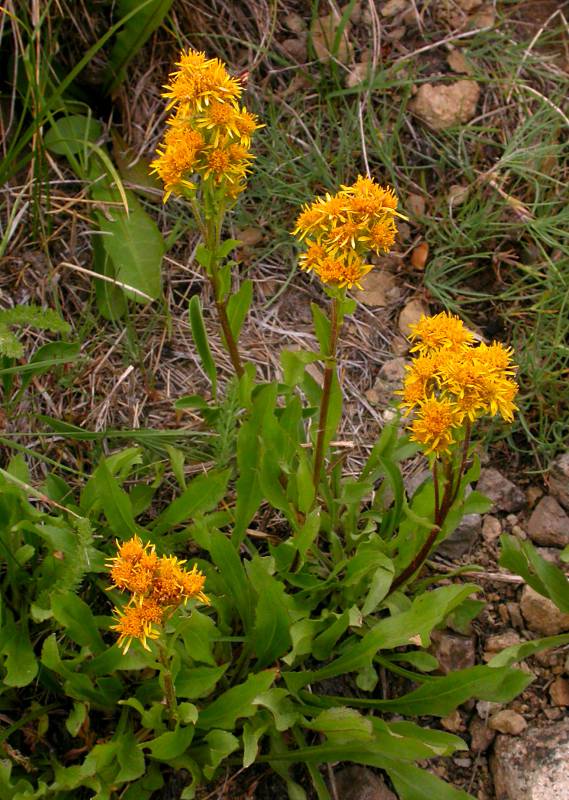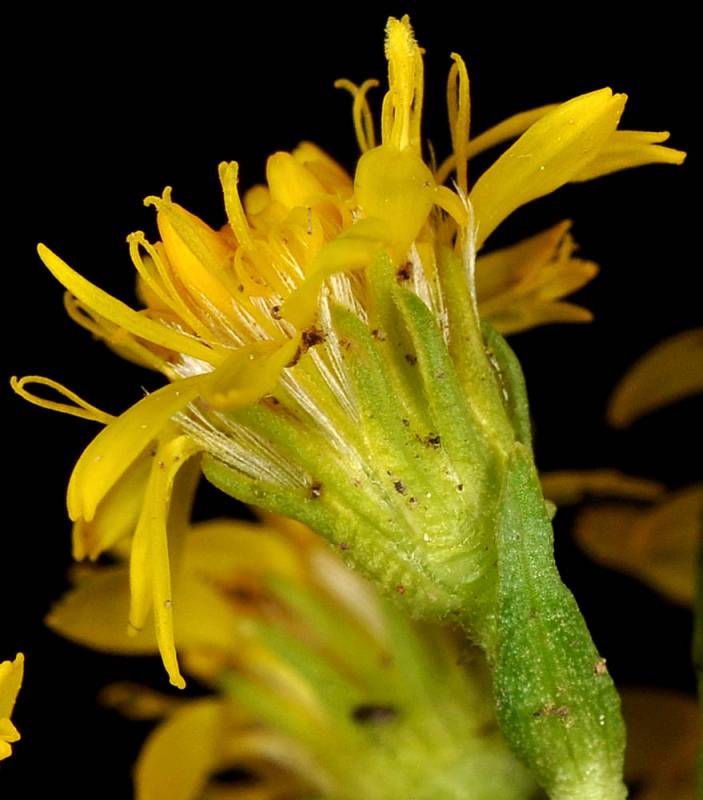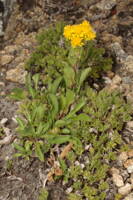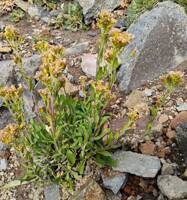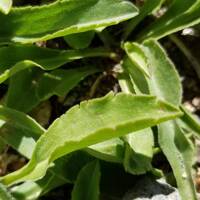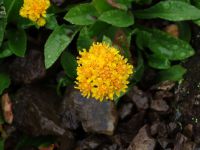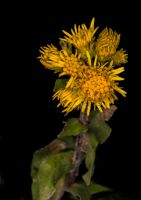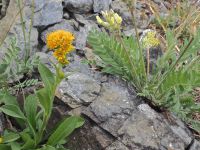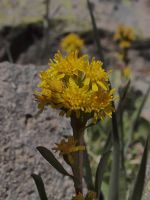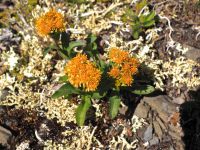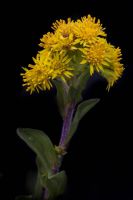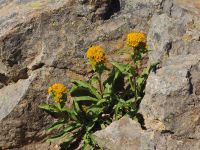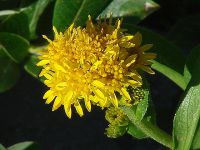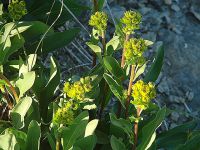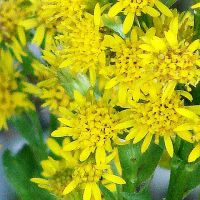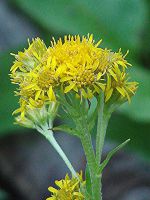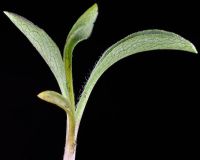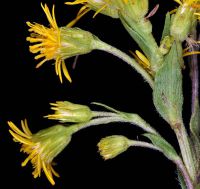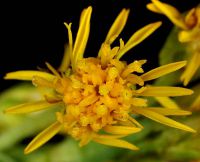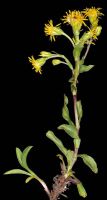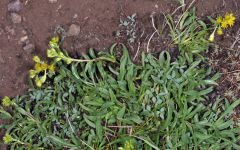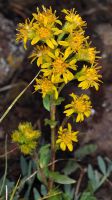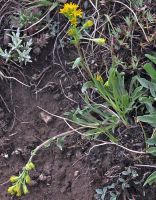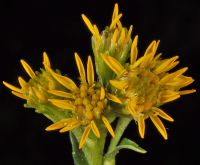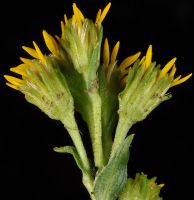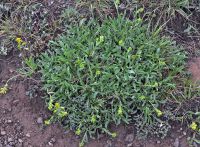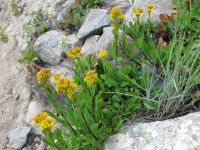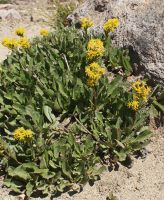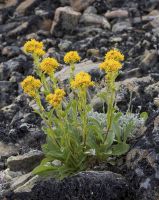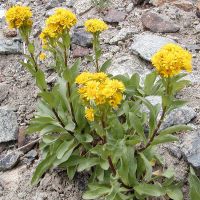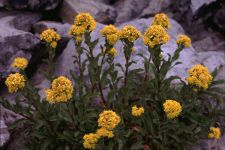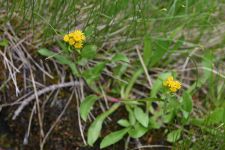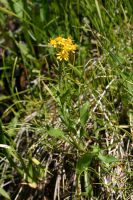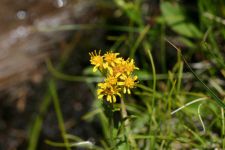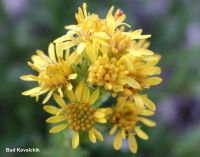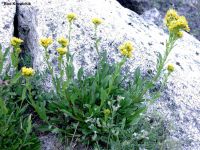Distribution: Occurring on both sides of the Cascades crest in Washington; British Columbia to Oregon, Nevada, and Arizona, east to the Rocky Mountains, Great Plains, Great Lakes region, and midwestern U.S.
Habitat: Mountain meadows and open slopes at high elevations
Flowers: June-September
Origin: Native
Growth Duration: Perennial
Conservation Status: Not of concern
Pollination: Bumblebees, bees, flies, butterflies, beetles, wasps
Perennial from a short rhizome, 0.5-5 dm. tall, the stem with soft, bent hairs at least in the inflorescence.
Basal and lower cauline leaves usually toothed, 2-10 cm. long and 5-18 mm. wide with conspicuous short, straight hairs on the margins at least on the petiole, otherwise glabrous; cauline leaves few and reduced.
Inflorescence flat-topped, with long peduncles; involucre 4-6 mm. high, its bracts thin and narrow, usually long-pointed; ray flowers normally 13, yellow, and disk flowers 21, orange-yellow; rays 4-5.5 mm. long.
The similar S. simplex does not have the hairs on the petiole margins, and the inflorescence is often elongate and narrow.
Publication: Hort. Kew. 3: 218. 1789.
Solidago multiradiata Aiton var. scopulorum A. Gray [HC]
PNW Herbaria: Specimen records of Solidago multiradiata in the Consortium of Pacific Northwest Herbaria database
WA Flora Checklist: Solidago multiradiata checklist entry
OregonFlora: Solidago multiradiata information
E-Flora BC: Solidago multiradiata atlas page
CalPhotos: Solidago multiradiata photos

